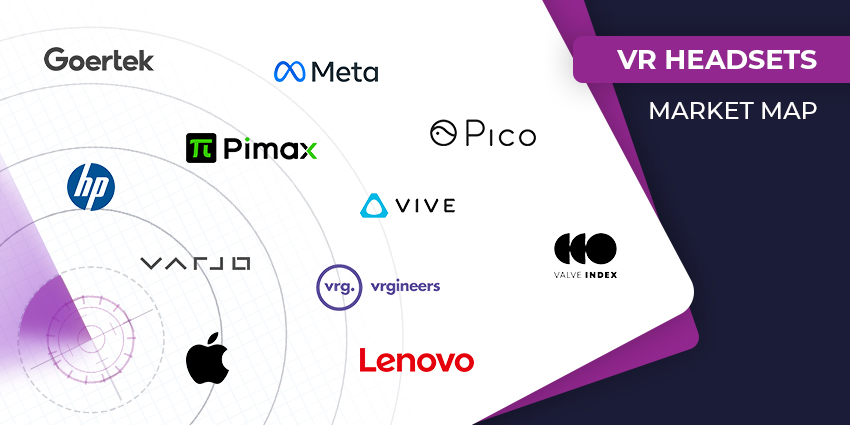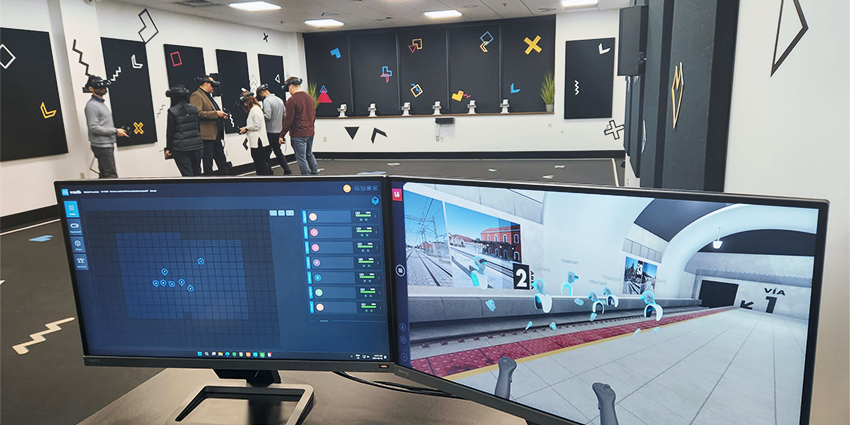As Virtual Reality continues to gain traction in industries across the globe, innovators, designers, and developers are consistently looking for better ways to bring their immersive ideas to life. Unreal Engine, one of the leading creation tools in the digital development market, has its own selection of valuable VR modes and technologies specifically suited to virtual reality.
The latest version of Unreal Engine, UE5 (Unreal Engine 5) shipped in April 2022 this year, after an initial period of early access in 2021. The technology allows developers and designers in the VR marketplace to create powerful, immersive experiences to suit various VR headsets and landscapes for virtually any use case.
Here’s what innovators need to know about getting started with VR design in Unreal Engine 5.
XR Design with Unreal Engine 5: An Introduction
Unreal Engine 5 is the latest version of Unreal Engine, introduced in 2022 to empower designers and developers in the age of metaverse creation. The solution is built to provide creators across industries with the tools they need to unlock next-generation real-time 3D content development.
Unreal Engine 5 claims to be the world’s most open and advanced tool for 3D content creation, with game-changing fidelity through features like Nanite and Lumen and the support business leaders need to create truly expansive worlds from scratch.
No matter which industry a designer works in, everything they need for VR content creation is included with UE5 out of the box. Key features include:
- Virtual shadow maps and Nanite micro polygon geometry systems
- Direct importing and replication for multi-million polygon meshes
- Powerful real-time framerates of up to 60 FPS without lost fidelity
- Dynamic global illumination and reflection technology
- Temporary super-resolution for high-quality upsampling
- World partitioning to automatically divide the world into grids, streaming only necessary cells
- Built-in artist-friendly animation authoring toolsets for quick iteration
- Control Rig for posing characters prior to animation in Sequencer
- Machine learning for high-quality real-time deformations
- Procedural audio design with MetaSounds for complete audio DSP graph generation
There’s also an extensive and constantly expanding set of modelling tools included in Unreal Engine 5, complete with mesh editing, geometry scripting, as well as UV creation and editing. Using these tools, designers can develop and iterate on all kinds of assets, including denser meshes, using kitbashing and photogrammetry tools within Unreal Editor.
Unreal Engine 5 Nanite and Lumen
The Nanite and Lumen tools are particularly compelling for VR designers. On next-gen consoles and computer systems, the UE5 Nanite geometry system introduces a new way to render and create virtual environments. While previous engines required artists to import reduced detail versions of original assets, this is no longer the case with Nanite.
Instead, artists can now import full-quality assets with geometric details which automatically scale in real-time based on the viewer’s distance from the asset. Virtual objects look more detailed up close and don’t simply pop in and out of existence.
The Nanite ecosystem works alongside Lumen, the dynamic global reflections and illumination system from UE5. This helps to ensure images look more realistic and engaging by allowing for the use of various forms of shadow and light in virtual interactions. Companies like Meta have already begun to introduce their own recommendations for how to use Unreal Engine’s tools to develop their headsets.
What Can VR Designers Do in Unreal Engine 5?
Where previous versions of Unreal Engine focused specifically on virtual reality, Unreal Engine 5 opens the door to all forms of extended reality development. Unreal Engine now supports tools for developing XR platforms and using XR devices within the content creation platform.
For instance, with Unreal Engine, VR designers can now:
- Develop for head-mounted XR solutions via OpenXR: Unreal Engine’s OpenXR solution is an open-standard environment providing an amazing access to all XR platforms and devices. With this technology, users can create immersive experiences within Unreal Engine that run on any system supporting OpenXR APIs.
- Create interactive XR experiences: Unreal Engine 5 allows users to create truly immersive and interactive XR experiences with various advanced tools. The system supports various forms of input, including eye tracking, motion control, and hand tracking capabilities.
- Create UIs for XR Experience: Companies and designers can also design unique UI experiences specifically intended for the XR environment. Unreal Engine has its own dedicated documentation available to help guide designers through the initial steps in designing an effective user interface.
- Develop Shared Experiences in XR: As bandwidth restrictions continue to be reduced with the use of edge computing, 5G, and cloud technology, designers can also use Unreal Engine to create shared experiences for multiple users within Unreal Engine.
- Support XR devices in Unreal Engine: The Unreal Engine ecosystem also provides designers with the option to design in VR environments, bringing XR tools into their workflows and processes. There are complete guides available on the website to help users set up their headsets and other tools.
Using Unreal Engine 5 in VR Development
Unreal Engine 5 was designed by Unreal Engine to provide today’s next-level world designers with all of the out-of-the-box tools they need to create fully immersive experiences. Not only can companies create immersive interactions within Unreal Engine, but they can also implement VR and other immersive components into their workflows.
For instance, Unreal Engine has a comprehensive selection of resources and learning tools available to show designers how to use virtual scouting in VR, use the Live Link face app for facial animations, and even add input data from VR peripherals, available here.
For additional inspiration and guidance, Unreal Engine also offers two free sample projects for users to download, as well as hundreds more free and paid UE5 products within the Unreal Marketplace. Designers can find examples and projects to inspire them here.







